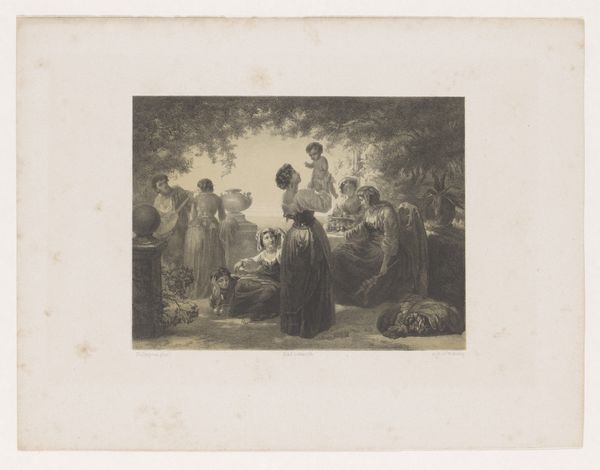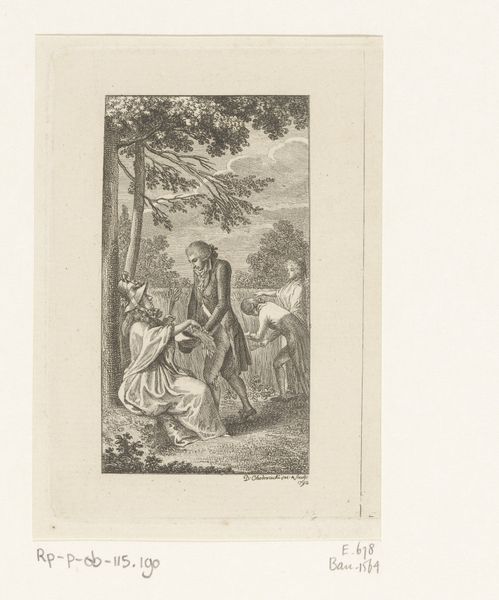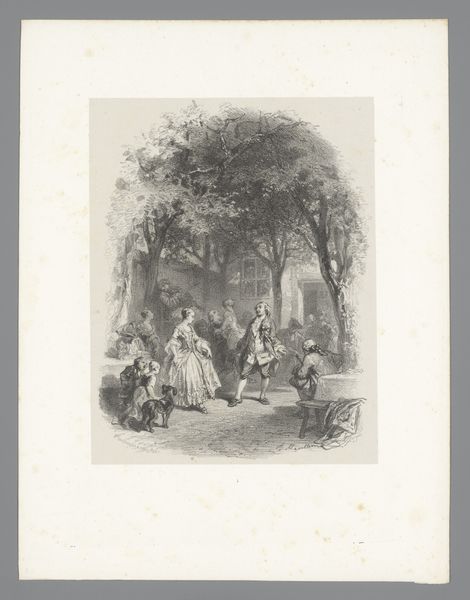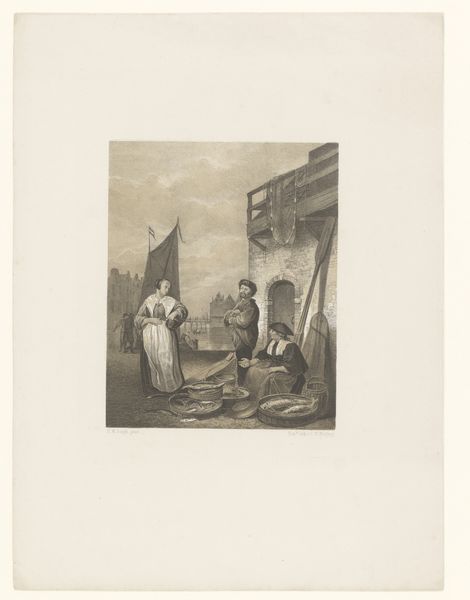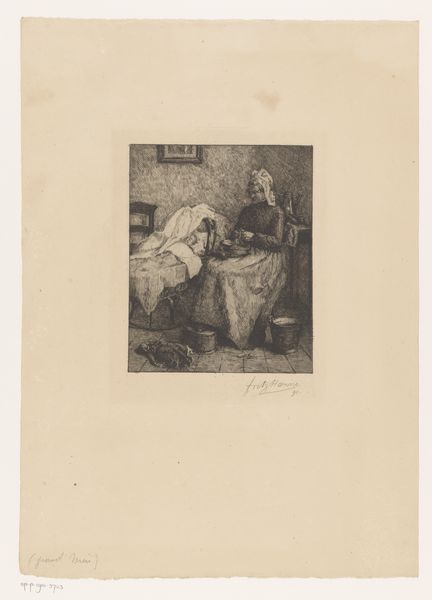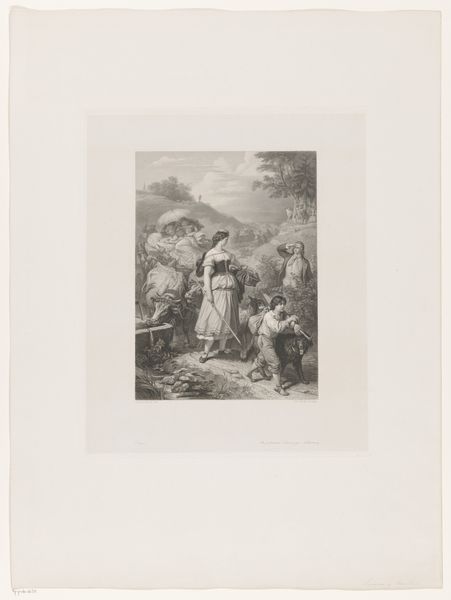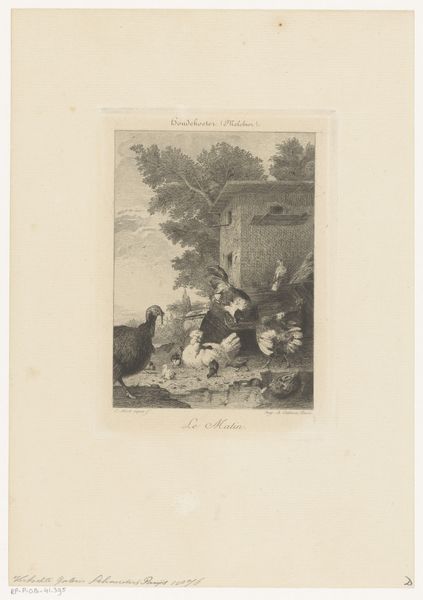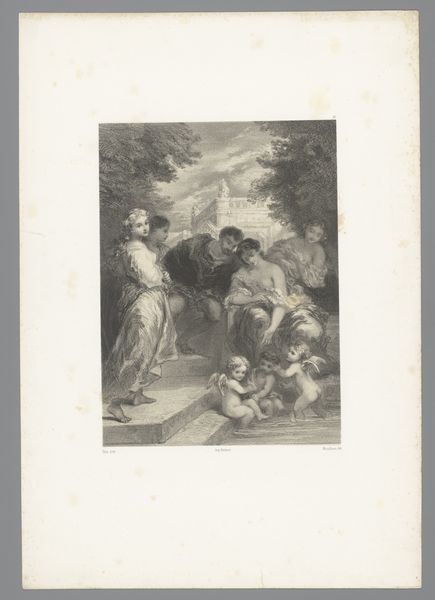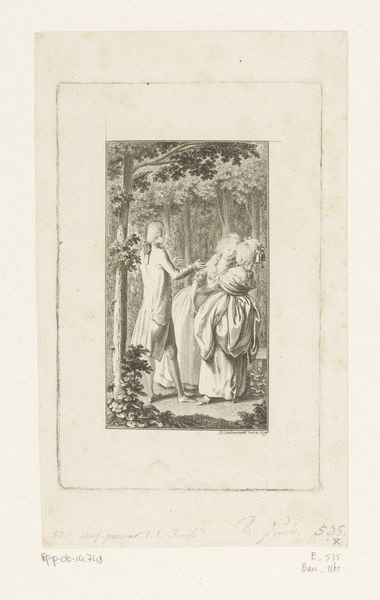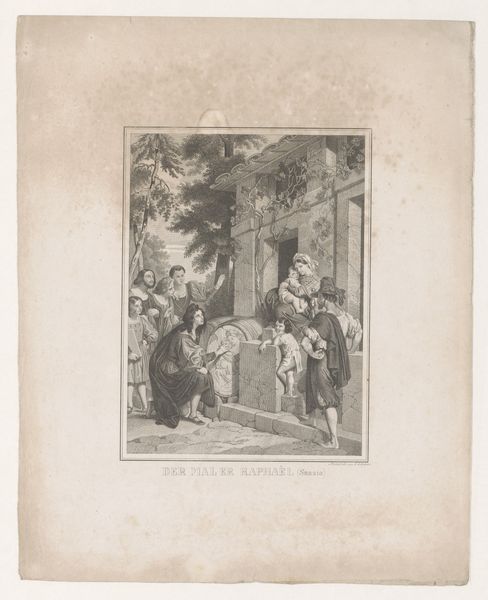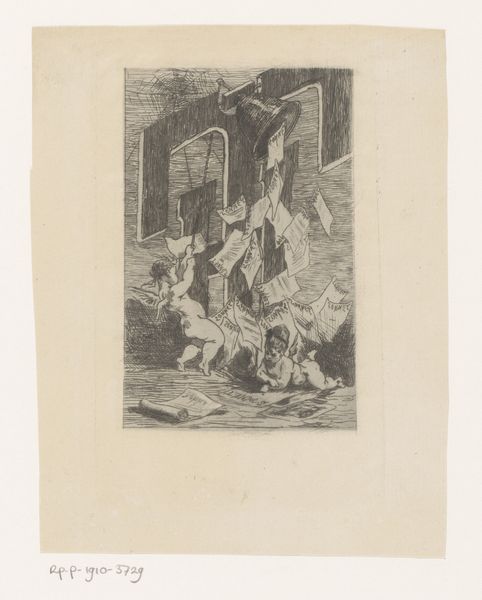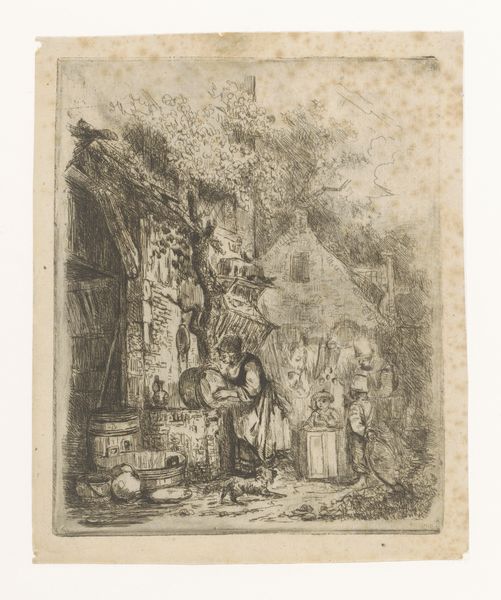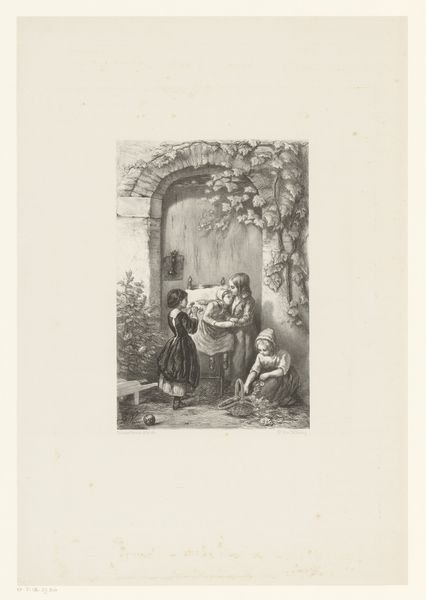
print, paper
#
narrative-art
# print
#
landscape
#
figuration
#
paper
#
romanticism
#
history-painting
Dimensions: height 422 mm, width 309 mm
Copyright: Rijks Museum: Open Domain
Curator: Let's explore "Jeanne d'Arc krijgt een visioen," or "Joan of Arc Receiving a Vision," a print made circa 1841, now residing here at the Rijksmuseum. It is believed to be the work of Pierre Girard. Editor: My first impression is the almost operatic quality of it. She's kneeling, bathed in light, reaching upwards – so dramatic! But the presence of the dog makes me smile a little. Curator: Indeed, the iconography of light in such scenes is central. It signifies divine intervention, illumination, and revelation. Consider how the shafts of light seem to emanate from the heavens, focusing directly upon Joan, yet also the more grounded dog nearby as a more mundane sign. The way Girard has harnessed Romanticism's penchant for emotion is rather apparent. Editor: It does feel heavily staged, almost. It is interesting that while the landscape speaks to an untamed divine and natural, there is a slightly sentimental idealization of her connection to god. What do you think that says about historical romanticism and maybe about women? Curator: I find that interesting too, in her depiction. Notice how she appears ennobled, purified, almost, by the light. It taps into a powerful cultural memory, where figures like Joan of Arc embody a fusion of spiritual purity and unwavering conviction. Her gender is immaterial when juxtaposed against the power she channels. Editor: I suppose that makes sense. I keep coming back to the dog. It seems so ordinary, almost stubbornly material against the visionary landscape. Does it represent loyalty, perhaps? Or the mundane world Joan is about to leave behind? It reminds me how so much art relies on a deep visual literacy on the part of its viewers. Curator: Precisely. The dog serves as an earthly anchor. The symbol creates a dichotomy and emphasizes the shift in Joan’s life, from shepherdess to warrior. The church in the background looms behind the scene. Editor: Thinking about it now, it is clear the dog adds to the drama by contrasting ordinariness. Overall, there is this quiet visual drama; the piece invites meditation on destiny and divine purpose in everyday lives. Curator: Absolutely. This image is less about historical accuracy and more about crafting a narrative infused with Romanticism's emotional intensity. Editor: Yes, after reflecting on this piece together, it shows that we interpret the cultural and visual information differently, and the beauty of art like this, perhaps, is in allowing room for varying viewpoints and interpretations.
Comments
No comments
Be the first to comment and join the conversation on the ultimate creative platform.
